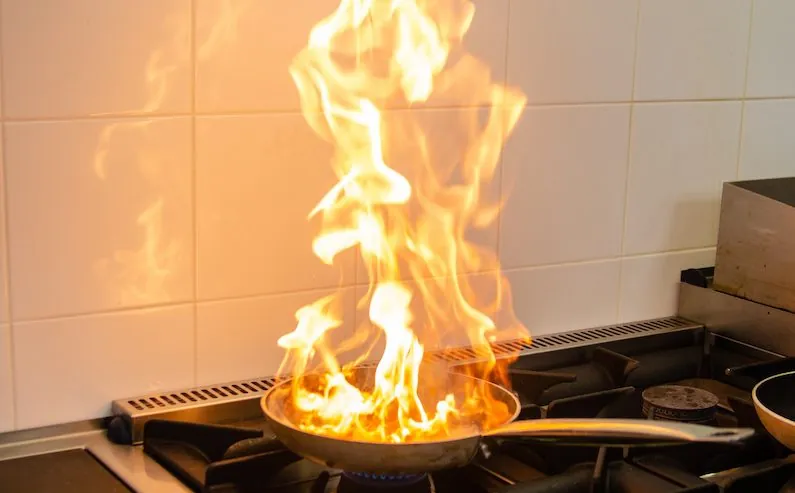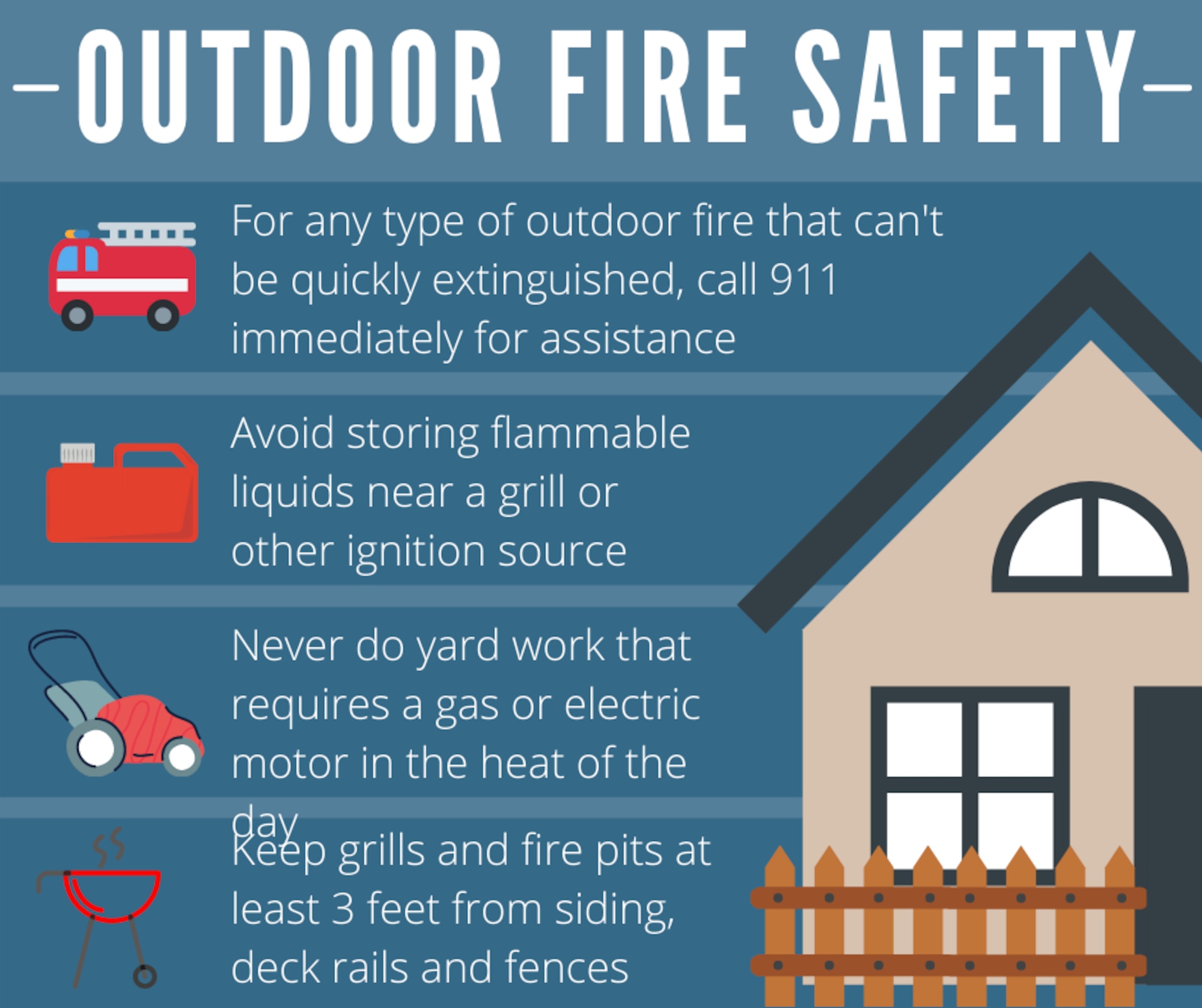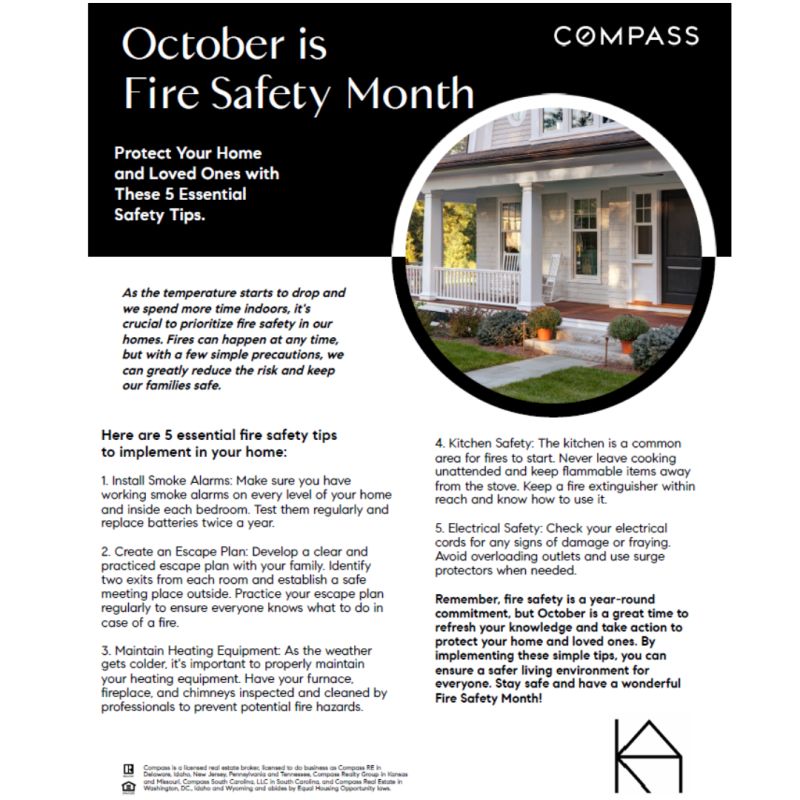Leaving an electric stove on unattended poses serious fire hazards. Always turn it off after use to ensure safety.
Electric stoves are a staple in modern kitchens, allowing for precise cooking and efficient meal preparation. However, amid our busy lives, it’s not uncommon to forget to turn off these appliances. It’s crucial to remember that an active electric stove can quickly become a source of danger, leading to potential house fires and putting inhabitants at risk.
Establishing a routine check before leaving the kitchen can prevent such accidents. Safety experts advocate for the use of timers and other reminders as failsafes against this oversight. Understanding the risks and developing good kitchen habits can protect you, your family, and your home from unnecessary harm. This small act of vigilance can make a significant difference in maintaining a safe cooking environment.
The Hazards Of An Unattended Electric Stove
Leaving an electric stove on can pose serious risks. Understanding these hazards helps prevent accidents. Always remain cautious with an electric stove in use.
Home Fires Sparked By Stoves
Electric stoves are a top reason for home fires. Forgetting a stove on leads to burnt food or worse. Flames can burst from overheated oil or food residues. It’s important to always double-check appliances before leaving the kitchen.
- Keep combustibles away: Items like paper towels can catch fire.
- Stay alert: Never leave cooking unattended.
- Use timers: Reminders help prevent mishaps.
Electric Stove: A Silent Threat
Unlike gas stoves, electric ones don’t produce a noticeable smell when left on, making them a silent threat in homes. Children touching a hot stove can result in burns. Always teach kitchen safety and supervise kids around cooking areas.
| Precaution | Action |
|---|---|
| Check dials | Ensure they’re off when finished. |
| Secure area | Keep pets and kids away from hot surfaces. |

Credit: www.puroclean.com
Tales Of Tragedy: Real-life Incidents
Welcome to our special feature, ‘Tales of Tragedy: Real-Life Incidents’, where we shed light on the risks of leaving an electric stove on unattended. Through heartbreaking stories from those who’ve suffered, we aim to raise awareness about the importance of kitchen safety.
Near Misses And Narrow Escapes
Kitchen mishaps can happen in the blink of an eye. Many households have faced close calls that serve as stern reminders for safety protocols. Here are a few accounts:
- Jane’s Quick Thinking: A timer served as Jane’s savior when her stove ignited a dish towel. Swift action and a nearby fire extinguisher prevented calamity.
- Sam’s Wake-Up Call: A forgotten pot nearly cost Sam his apartment. The smoke alarm did its duty, waking Sam up just in time to douse the beginning flames.
Devastating Losses: A Review Of Past Accidents
Regrettably, not all stories of a forgotten stove have fortunate endings. The devastation impacts families and communities alike. Consider these tragic accidents:
| Year | Location | Outcome |
|---|---|---|
| 2018 | Denver, CO | A house fire resulted in severe property damage and loss of cherished belongings. |
| 2019 | Tampa, FL | An unattended stove led to a fire that took the lives of a young couple. |
Remembering these losses is a grim, but necessary reminder to never take kitchen safety for granted.
Anatomy Of Electric Stove Safety
Keeping an electric stove safe involves understanding its structure. Safety hinges on recognizing potential hazards intrinsic to its design, operation, and maintenance. This section delves into the vital components and working principles of an electric stove, highlighting the importance of safety measures.
How Electric Stoves Work
Electric stoves transform electrical energy into heat for cooking. When you turn the dial, electricity flows through coils inside the stove top. These coils are called ‘heating elements.’ They get red hot to fry, boil, or bake your favorite dishes. Even heat distribution ensures that food cooks evenly.
- Electrical current passes through coils.
- Coils turn electricity into heat energy.
- Heat spreads across the flat cooktop surface.
Key Components Prone To Risk
Every part of the electric stove can impact safety. The following components are critical:
| Component | Risk |
|---|---|
| Heating Elements | Can stay hot long after being turned off. |
| Control Knobs | Misuse can lead to overheating or fire. |
| Wiring and Connectors | Wear and tear may cause electrical faults. |
Regular maintenance keeps these components in check. Inspecting the stove for damage and wear happens during this. Ensuring that disconnect switches and knobs work properly is key for safety. Clean the appliance to prevent the build-up of flammable grease. Never leave the stove unattended while turned on, as this can lead to dangerous scenarios.
Best Practices In Kitchen Safety
Staying safe in the kitchen is crucial, especially when dealing with electric stoves. Mishaps can lead to fire hazards or injuries. Knowing the best practices boosts safety for everyone. Follow these steps to ensure a secure cooking environment.
Routine Checks For Maintenance
Regular upkeep stops potential hazards. Here’s how:
- Examine cords for wear and tear. Replace frayed or damaged ones immediately.
- Ensure the stove components function correctly. If anything seems off, call a professional.
- Clean surfaces and elements to prevent build-up of grease. This reduces the risk of fire.
Cooking Vigilance
Always stay alert while using an electric stove. Here are the key steps:
- Never leave the stove unattended when turned on. Always stay in the kitchen, or turn it off if you must leave.
- Keep flammable objects away. Ensure no fabrics or paper goods can contact hot surfaces.
- Use a timer to remind you that the stove is on. This helps prevent food from burning and potential fires.
Innovative Tools For Prevention
Never leaving your electric stove on is a crucial safety practice in any home. Mishaps are preventable with innovative tools for prevention. Let’s explore some cutting-edge solutions to keep your kitchen safe.
Smart Appliances And Timers
Today, technology integrates into home appliances, making them smart and savvy. Smart stoves can now connect to your smartphone for real-time alerts. They also come with built-in timers that automatically shut off. This ensures cooking never goes unattended.
- Wi-Fi Enabled Stoves: Get notifications straight to your phone.
- Auto Shut-Off Timers: Reduce risks of fire or food overcooking.
- Voice-Activated Controls: Turn off the stove with a simple voice command.
Safety Devices On The Market
The market offers dedicated safety devices. They add an extra layer of protection for traditional and electric stoves alike.
| Device | Function |
|---|---|
| Stove Guard | Automatically cuts power if danger is detected. |
| Motion Sensor | Shuts off the stove if no motion is detected for a set time. |
| Temperature Sensor | Alerts or shuts off the stove if extreme heat is sensed. |
Investing in these devices promotes safety and peace of mind. They are easy to install and operate, making them suitable for every household.
Creating A Safety-first Mindset
Preventing hazards in the kitchen starts with a safety-first mindset. Understanding the risks associated with leaving an electric stove on unattended is a critical first step. Education and good cooking habits can significantly lower the chances of accidents. Let’s dive into some powerful ways to foster this safety consciousness.
Educational Programs And Resources
Knowledge is power, especially when it comes to safety. Participating in educational programs can equip you with necessary precautions for using an electric stove. These programs often cover:
- Fire safety fundamentals
- Proper appliance operation
- Emergency response techniques
Resources like brochures, online courses, and community workshops make learning convenient. They also provide valuable tips that can save lives.
Access these materials through local fire departments or kitchen safety organizations.
Promoting Responsible Cooking Habits
Adopting responsible cooking habits makes all the difference. Consider these tips:
| Tip | Description | Benefit |
|---|---|---|
| Stay Alert | Always supervise cooking. Never leave the stove unattended. | Prevents potential fires. |
| Use Timers | Set a timer to remind you when to turn off the stove. | Helps avoid overcooking and potential hazards. |
| Keep It Clean | Regularly clean the stove to prevent grease build-up. | Reduces the risk of grease fires. |
Teach children these habits early on. Make safety a family priority. By promoting a responsible attitude, every household can become a safer space.
When Things Go Wrong: Emergency Response
Coming face-to-face with a stove fire can be frightening. Knowing the right steps to take in such an emergency is crucial. Your actions can prevent a disaster. Let’s discuss what to do if you encounter a stove fire and need to act fast.
Steps To Control A Stove Fire
Never try to move the pot or pan outside. This can spread the flames. Turn off the heat if it’s safe to do so. Here are steps you should follow:
- Use a lid or metal cookie sheet to cover the pan.
- Turn off the burner to remove the heat source.
- If flames get out of control, use a fire extinguisher.
- Do not use water on a grease fire, as it can spread the fire.
- Clear the area around the stove of anything flammable.
- If the fire is electrical, cut the power at the circuit breaker.
- Evacuate your home if the fire does not subside.
Emergency Services And First-aid Tips
Call 911 immediately in case of a fire. Do not wait. If you have burns:
- Run cool water over the burn for 3-5 minutes.
- Do not use ice. It can cause more damage.
- Cover the burn with a clean, dry cloth.
- Avoid applying creams or ointments right away.
- If the burn is severe, seek medical help immediately.
Rember, safety comes first. Prevent fires by never leaving your electric stove unattended. Equip your home with a fire extinguisher suitable for grease fires. Keep emergency numbers handy and create a clear escape plan. By being prepared, you can ensure the safety of your family and home.

Credit: www.nytimes.com
Legislation And Safety Standards
Ensuring the safety of homes is a top priority for legislation and standard practices, especially considering kitchen appliances. Rules and standards safeguard families from hazards associated with electric stoves. This section will explore the legal requirements and safety protocols that aim to prevent accidents and fires resulting from unattended electric stoves.
Building Codes And Appliance Regulations
Building codes and regulations are vital for electric stove safety. These arrangements dictate the design, installation, and materials used in constructing safe kitchen environments. But how do they particularly affect electric stoves?
- Codes ensure proper stove installation away from flammable materials.
- Regulations set benchmarks for manufacturers to build safer appliances.
- Inspections by authorities ensure compliance with these standards.
These measures significantly reduce the risk of fire and injuries. Developers and builders must follow these regulations to the letter.
Governmental Efforts For Kitchen Safety
The government takes active steps to minimize kitchen-related accidents. This involvement includes running awareness campaigns and mandating safety features on electric stoves. What actions are part of this effort?
- Introducing auto shut-off features on new electric stoves.
- Providing public safety announcements about unattended cooking.
- Offering educational resources to promote safe cooking habits.
Auto shut-off mechanisms are a breakthrough in preventing fires. These features automatically turn off the stove when left unattended for too long. The government also works with manufacturers to enhance electric stove safety through innovation.

Credit: www.safety.af.mil
Frequently Asked Questions On Never Leave Your Electric Stove On
Is Leaving An Electric Stove On Dangerous?
Yes, leaving an electric stove on poses fire hazards and can lead to accidents, especially if combustible items are nearby. It’s essential to always turn it off after use.
How Long Is It Safe To Keep An Electric Stove On?
It is safe to keep an electric stove on for the duration of cooking. Unattended, it should not be left on for more than a few minutes to prevent potential hazards.
Can An Electric Stove Turn On By Itself?
Electric stoves cannot turn on by themselves under normal conditions. Malfunctions or accidental contact with controls can cause unintended activation, so caution is advised.
What Are The Risks Of Unattended Cooking On Electric Stoves?
Unattended cooking on electric stoves can lead to fire risks, burnt food, smoke damage, and carbon monoxide release if not ventilated properly.
Conclusion
Wrapping up, always remember that safety is paramount when using an electric stove. It’s easy to forget, yet leaving it on can pose serious hazards. Make it a habit to double-check your stove, ensuring it’s off before exiting the room.
Your vigilance protects not only your home but also the wellbeing of those you cherish. Stay safe and alert in the kitchen!




